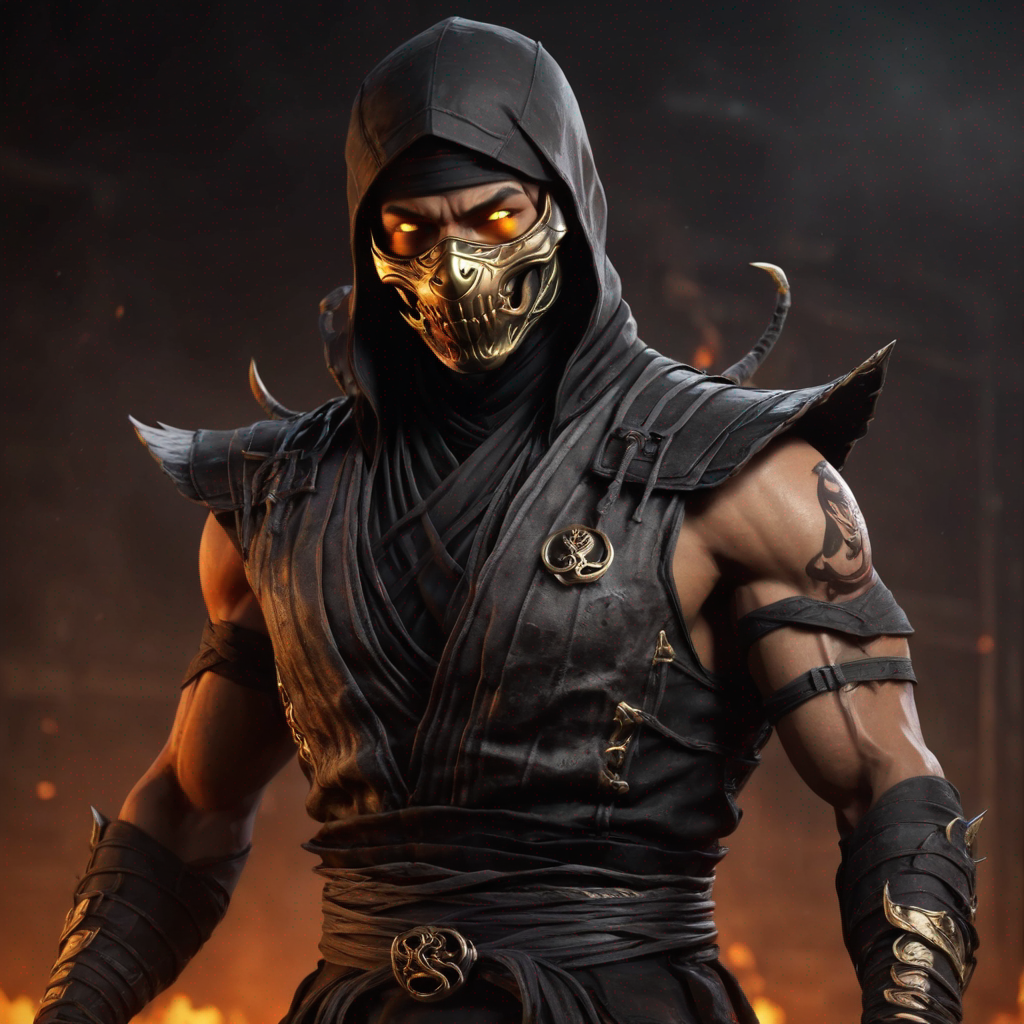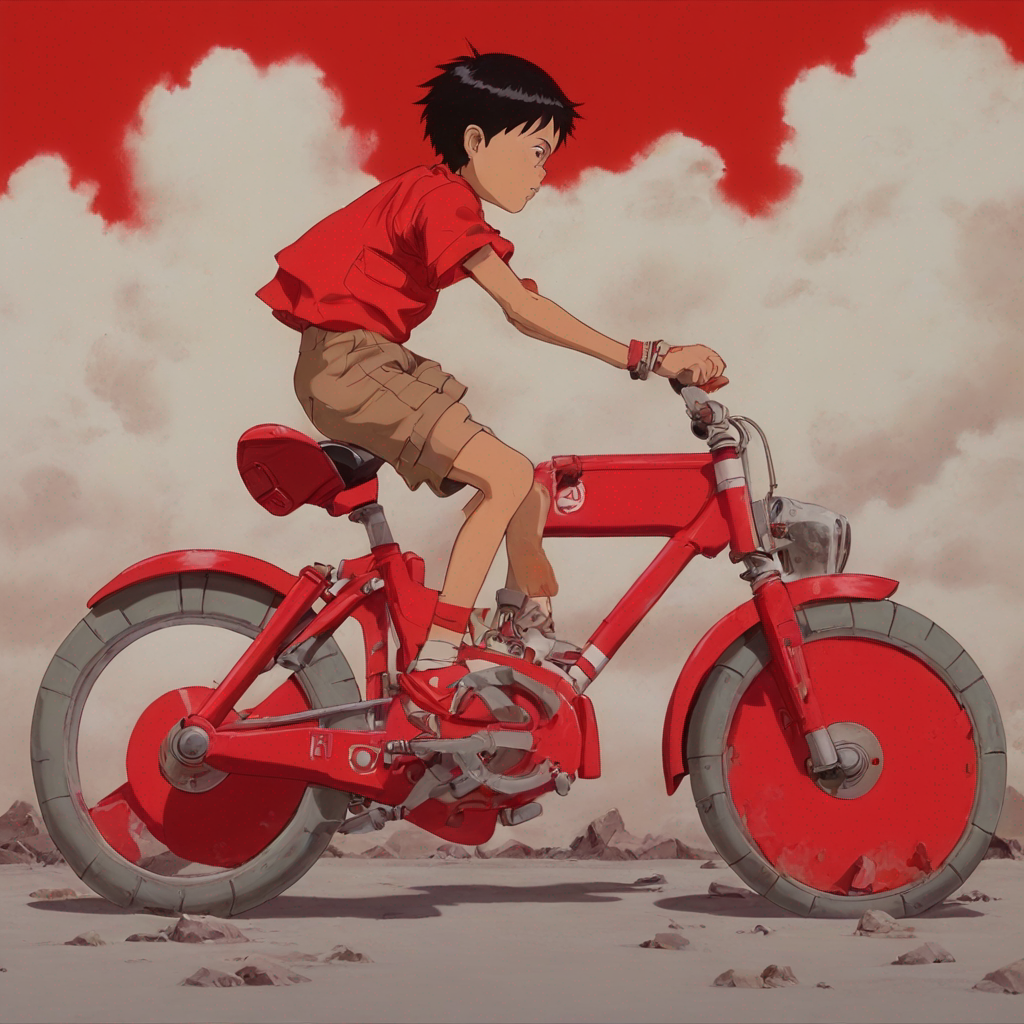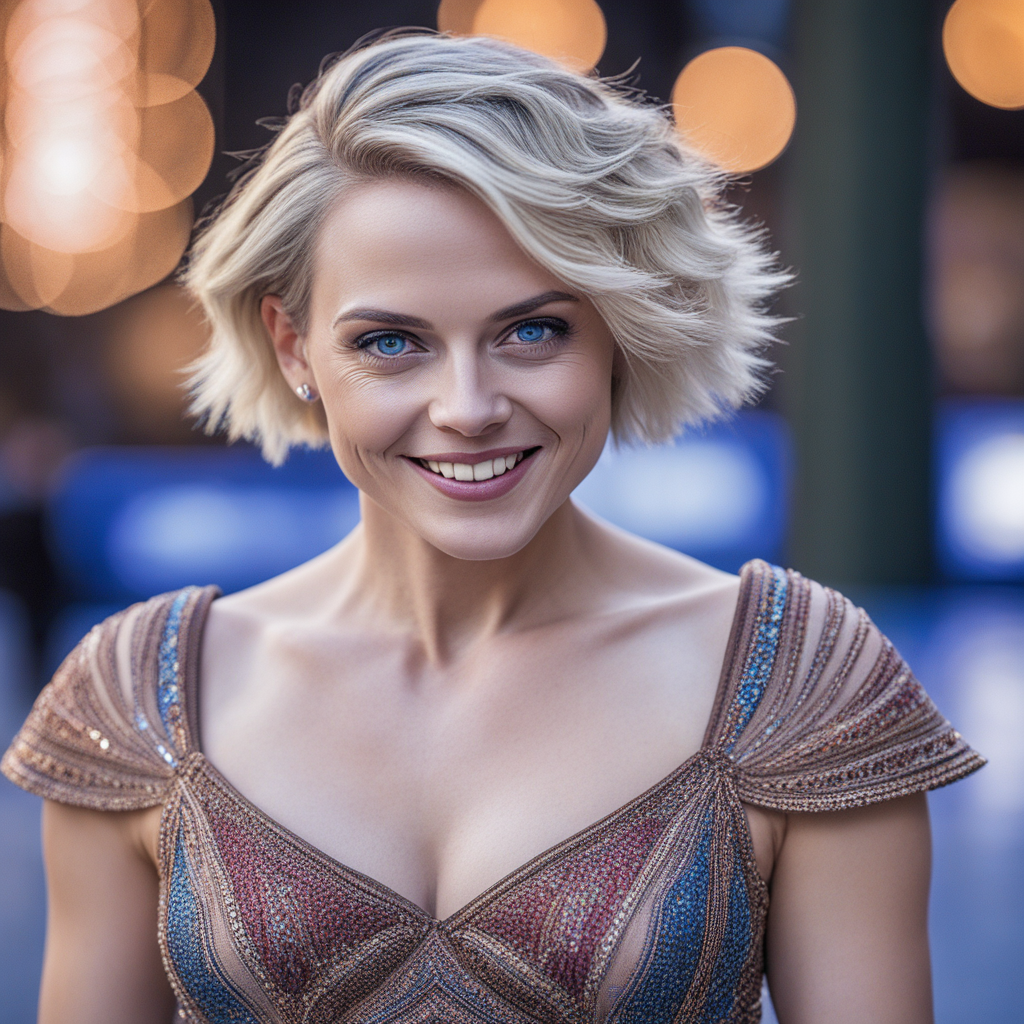sdxl-mk1
Maintainer: asronline

7

| Property | Value |
|---|---|
| Run this model | Run on Replicate |
| API spec | View on Replicate |
| Github link | No Github link provided |
| Paper link | No paper link provided |
Create account to get full access
Model overview
The sdxl-mk1 model is designed to generate Mortal Kombat 1 fighters and character skins. It is a specialized model created by asronline that is similar to other SDXL-based models like mk1-redux, masactrl-sdxl, sdxl-akira, and sdxl-mascot-avatars. These models offer a range of capabilities, from generating classic Mortal Kombat fighters to producing cute mascot avatars.
Model inputs and outputs
The sdxl-mk1 model accepts a variety of inputs, including a prompt, image, and various parameters to control the output. The outputs are generated images depicting Mortal Kombat 1 fighters and character skins.
Inputs
- Prompt: The input prompt that describes the desired output image.
- Image: An input image that can be used as a starting point for the generation process.
- Mask: An input mask that can be used to define areas of the image that should be preserved or inpainted.
- Seed: A random seed value that can be used to control the randomness of the generated output.
- Width and Height: The desired dimensions of the output image.
- Refine: The refinement style to use when generating the output.
- Scheduler: The scheduler algorithm to use when generating the output.
- LoRA Scale: The scale factor for LoRA (Local Reparameterization) additions.
- Num Outputs: The number of output images to generate.
- Refine Steps: The number of refinement steps to perform.
- Guidance Scale: The scale factor for classifier-free guidance.
- Apply Watermark: A flag to control whether a watermark is applied to the output images.
- High Noise Frac: The fraction of high noise to use for expert ensemble refinement.
- Negative Prompt: An optional negative prompt to guide the generation process.
- Prompt Strength: The strength of the input prompt when using image-to-image or inpainting.
- Num Inference Steps: The number of denoising steps to perform during the generation process.
Outputs
- Output Images: The generated Mortal Kombat 1 fighter and character skin images.
Capabilities
The sdxl-mk1 model is capable of generating high-quality images of Mortal Kombat 1 fighters and character skins. It can produce a wide variety of characters and styles, and the input parameters allow for fine-tuning the output to match specific preferences.
What can I use it for?
The sdxl-mk1 model can be used to create custom Mortal Kombat 1-inspired artwork, character designs, or even fan projects. Potential use cases include generating content for games, websites, social media, or other Mortal Kombat-themed applications. The model's capabilities could also be leveraged to create unique and engaging marketing materials or merchandise for Mortal Kombat fans.
Things to try
With the sdxl-mk1 model, you can experiment with different prompts, input images, and parameter settings to see how they affect the generated output. Try describing specific Mortal Kombat characters or themes, or use the image-to-image and inpainting capabilities to refine or modify existing Mortal Kombat-inspired artwork. The model's flexibility allows for a wide range of creative possibilities.
This summary was produced with help from an AI and may contain inaccuracies - check out the links to read the original source documents!
Related Models

mk1-redux

1
The mk1-redux model is a refined version of the original MK1 model created by asronline, with a focus on generating fighters with human faces and different materials like water, ice, and fire. It is similar to other AI models like gfpgan, which is a practical face restoration algorithm for old photos or AI-generated faces, and edge-of-realism-v2.0, which can generate new images from any input text. Model inputs and outputs The mk1-redux model accepts a variety of inputs, including an input image for img2img or inpaint mode, a prompt, and optional parameters like seed, width, height, and scheduler. The model outputs one or more generated images that match the provided prompt. Inputs Prompt**: The input text prompt that describes the desired image Image**: An input image for img2img or inpaint mode Mask**: An input mask for inpaint mode, where black areas will be preserved and white areas will be inpainted Seed**: A random seed, which can be left blank to randomize Width/Height**: The desired width and height of the output image Refine**: The refine style to use Scheduler**: The scheduler algorithm to use LoRA Scale**: The LoRA additive scale, applicable only on trained models Num Outputs**: The number of images to output Refine Steps**: The number of steps to refine, for the base_image_refiner Guidance Scale**: The scale for classifier-free guidance Apply Watermark**: Whether to apply a watermark to the output image High Noise Frac**: The fraction of noise to use for the expert_ensemble_refiner Negative Prompt**: An optional negative prompt to guide the image generation Outputs One or more generated images that match the provided prompt Capabilities The mk1-redux model can be used to generate a variety of images, with a focus on fighters with human faces and different materials. It can be used for creative projects, concept art, and even commercial applications where high-quality, customized images are needed. What can I use it for? The mk1-redux model can be useful for a wide range of applications, such as creating concept art for games or films, generating custom product images for e-commerce websites, or even producing unique artwork for personal or commercial use. The model's ability to generate images with different materials and human-like faces makes it particularly versatile. Things to try One interesting thing to try with the mk1-redux model is experimenting with the different refine styles and scheduler algorithms to see how they affect the generated images. You could also try combining the model with other AI tools, such as the gfpgan model, to further enhance the realism and quality of the generated images.
Updated Invalid Date

sdxl-akira

1
The sdxl-akira model is a text-to-image generation AI trained on the cult classic anime film Akira. It is one of several specialized SDXL models created by doriandarko. Similar SDXL models include those trained on Hiroshi Nagai's illustrations, blocky oil paintings, and Blade Runner 2049 stills. The sdxl and sdxl-niji-se models, created by lucataco, provide a more general text-to-image generation capability. Model inputs and outputs The sdxl-akira model takes a text prompt as input and generates one or more related images as output. The input prompt can describe the desired image in natural language, and the model will attempt to create a matching visual representation. The input schema also allows for optional parameters like image size, guidance scale, and seed values to tailor the output. Inputs Prompt**: The text prompt describing the desired image Negative Prompt**: An optional prompt specifying content to exclude from the generated image Image**: An input image for use in img2img or inpaint mode Mask**: An input mask for inpaint mode, with black areas preserved and white areas inpainted Seed**: A random seed value to control image generation Width/Height**: The desired dimensions of the output image Num Outputs**: The number of images to generate Scheduler**: The denoising scheduler algorithm to use Guidance Scale**: The scale for classifier-free guidance Num Inference Steps**: The number of denoising steps to perform Prompt Strength**: The strength of the prompt when using img2img or inpaint modes Refine**: The refine style to use LoRA Scale**: The additive scale for LoRA (if applicable) High Noise Frac**: The fraction of high noise to use (for expert_ensemble_refiner) Apply Watermark**: Whether to apply a watermark to the generated images Outputs Image URI**: A URI pointing to the generated image Capabilities The sdxl-akira model can generate visually striking images inspired by the Akira anime. It can depict characters, environments, and scenes from the film, as well as imaginative new interpretations of the Akira aesthetic. The model is particularly adept at capturing the distinct cyberpunk, post-apocalyptic, and neo-Tokyo visual style of the source material. What can I use it for? The sdxl-akira model could be used to create original Akira-inspired artwork, fan art, and illustrations. It could also be used to generate concept art or visual assets for video games, films, or other media projects with a similar futuristic, dystopian aesthetic. The model's capabilities could be leveraged by artists, designers, and creative professionals to explore and expand the Akira universe through new visual interpretations. Things to try Experiment with different prompt variations to see how the model interprets and renders various elements of the Akira universe, such as the iconic motorcycle chase scenes, the sprawling Neo-Tokyo cityscapes, or the towering mecha. You can also try using the img2img or inpaint modes to refine or modify existing Akira-inspired images. Additionally, playing with the model's settings like guidance scale, number of inference steps, and LoRA scale can produce a wide range of unique and unexpected results.
Updated Invalid Date

sdxl-lightning-4step

453.2K
sdxl-lightning-4step is a fast text-to-image model developed by ByteDance that can generate high-quality images in just 4 steps. It is similar to other fast diffusion models like AnimateDiff-Lightning and Instant-ID MultiControlNet, which also aim to speed up the image generation process. Unlike the original Stable Diffusion model, these fast models sacrifice some flexibility and control to achieve faster generation times. Model inputs and outputs The sdxl-lightning-4step model takes in a text prompt and various parameters to control the output image, such as the width, height, number of images, and guidance scale. The model can output up to 4 images at a time, with a recommended image size of 1024x1024 or 1280x1280 pixels. Inputs Prompt**: The text prompt describing the desired image Negative prompt**: A prompt that describes what the model should not generate Width**: The width of the output image Height**: The height of the output image Num outputs**: The number of images to generate (up to 4) Scheduler**: The algorithm used to sample the latent space Guidance scale**: The scale for classifier-free guidance, which controls the trade-off between fidelity to the prompt and sample diversity Num inference steps**: The number of denoising steps, with 4 recommended for best results Seed**: A random seed to control the output image Outputs Image(s)**: One or more images generated based on the input prompt and parameters Capabilities The sdxl-lightning-4step model is capable of generating a wide variety of images based on text prompts, from realistic scenes to imaginative and creative compositions. The model's 4-step generation process allows it to produce high-quality results quickly, making it suitable for applications that require fast image generation. What can I use it for? The sdxl-lightning-4step model could be useful for applications that need to generate images in real-time, such as video game asset generation, interactive storytelling, or augmented reality experiences. Businesses could also use the model to quickly generate product visualization, marketing imagery, or custom artwork based on client prompts. Creatives may find the model helpful for ideation, concept development, or rapid prototyping. Things to try One interesting thing to try with the sdxl-lightning-4step model is to experiment with the guidance scale parameter. By adjusting the guidance scale, you can control the balance between fidelity to the prompt and diversity of the output. Lower guidance scales may result in more unexpected and imaginative images, while higher scales will produce outputs that are closer to the specified prompt.
Updated Invalid Date

sdxl-custom-model

1
sdxl-custom-model is a variant of the SDXL (Stable Diffusion XL) text-to-image AI model, developed by alexgenovese. This model includes enhancements such as Callback Adjust, which can provide additional customization and refinement capabilities compared to the original SDXL model. While the core functionality remains similar to SDXL, the custom modifications may offer unique advantages for certain use cases. Model inputs and outputs sdxl-custom-model is a text-to-image generation model, taking in a textual prompt and producing a corresponding image. The model's inputs and outputs are as follows: Inputs Prompt**: The textual description of the desired image to be generated. Seed Number**: A numerical seed value that can be used to control the randomness of the generated image. Negative Prompt**: A textual prompt specifying elements that should not be included in the generated image. Num Inference Steps**: The number of steps to be used in the image generation process. Guidance Scale**: The strength of the guidance signal used to steer the image generation towards the desired prompt. Denoising**: The strength of the denoising process applied to the generated image. Refiner**: A boolean flag to activate the Refiner module, which can potentially enhance the generated image. Lora URL**: A link to a LORA (Low-Rank Adaptation) model that can be used to further fine-tune the generation process. Outputs Generated Image**: The output of the model is a URI (Uniform Resource Identifier) that points to the generated image. Capabilities sdxl-custom-model can generate a wide variety of images based on textual prompts, similar to the capabilities of the original SDXL model. The custom enhancements, such as Callback Adjust, may provide additional control and refinement over the generated images, potentially allowing for more precise and tailored outputs. What can I use it for? sdxl-custom-model can be used for various creative and practical applications, such as: Generating concept art, illustrations, or visual assets for creative projects. Producing images for use in marketing, advertising, or social media content. Experimenting with different prompts and settings to explore the model's capabilities and find unique visual styles. Things to try When working with sdxl-custom-model, you can experiment with different combinations of input parameters, such as adjusting the Guidance Scale, Denoising, and Refiner settings, to see how they impact the generated images. Additionally, leveraging the provided LORA URL can open up opportunities for further fine-tuning and customization of the model's capabilities.
Updated Invalid Date